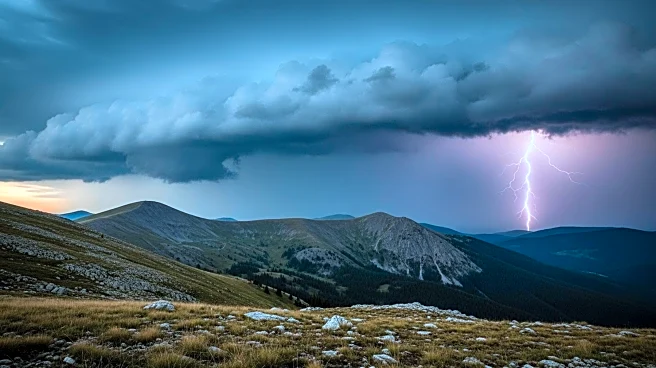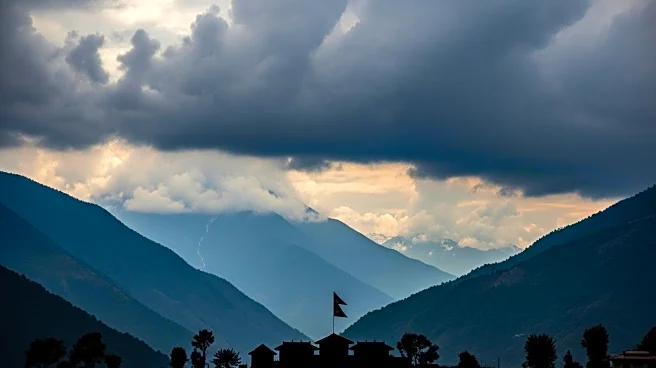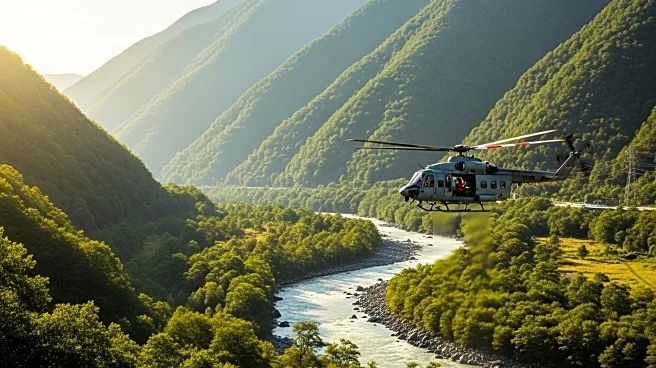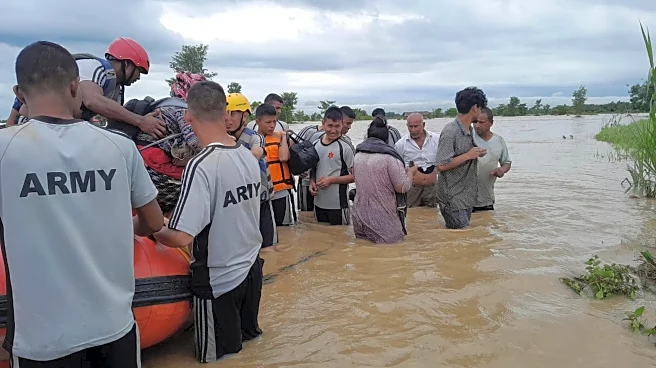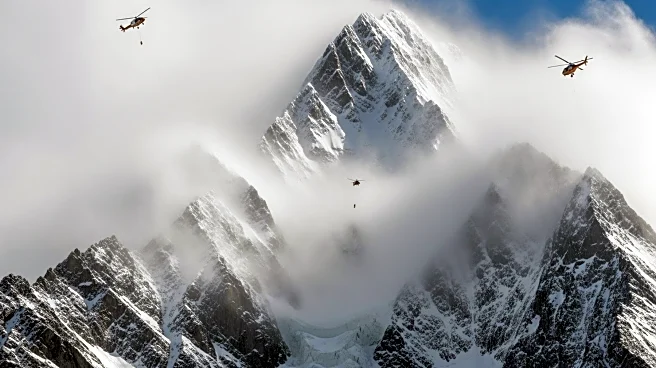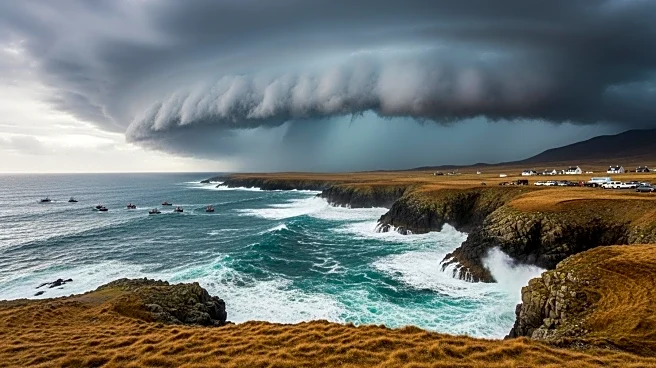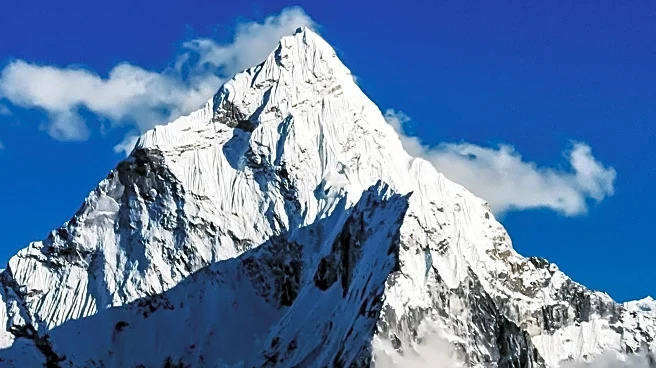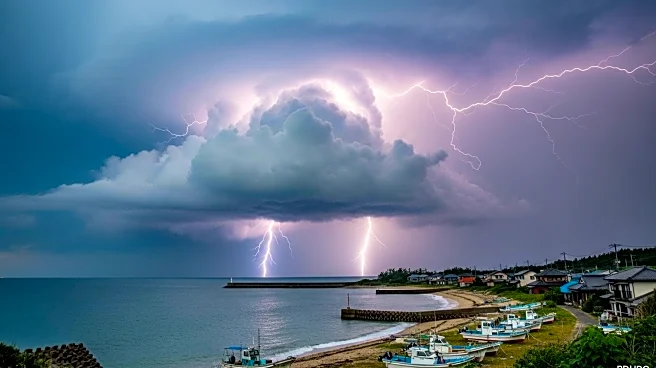What's Happening?
Severe rainfall in Nepal has triggered landslides, lightning strikes, and flooding, resulting in the deaths of at least 22 people. The eastern mountain district of Illam was particularly affected, with landslides sweeping away several villages, killing 18 people and leaving seven missing. A family of six was killed when a landslide crushed their home. The adverse weather conditions have also led to the closure of major highways and the grounding of domestic flights. The government has issued a severe rainfall warning and declared a national holiday to address the situation.
Why It's Important?
The natural disaster highlights the vulnerability of Nepal's infrastructure and communities to extreme weather events, particularly during the monsoon season. The fatalities and disruptions underscore the need for improved disaster preparedness and response mechanisms. The closure of highways and grounding of flights have significant implications for transportation and logistics, affecting the movement of people and goods. The situation also raises concerns about the impact of climate change on weather patterns in the region, potentially leading to more frequent and severe natural disasters.
What's Next?
Rescue operations are ongoing, with authorities deploying helicopters for medical evacuations. The government is assessing the damage and coordinating relief efforts. The focus will likely be on restoring transportation links and providing aid to affected communities. There may also be discussions on enhancing infrastructure resilience and disaster management strategies to better cope with future events.
Beyond the Headlines
The disaster may prompt a reevaluation of Nepal's infrastructure development and urban planning, particularly in vulnerable areas. It also highlights the broader issue of climate change and its impact on weather patterns, which could lead to increased frequency and intensity of such events. The international community may need to consider providing support for climate adaptation and disaster risk reduction in Nepal.

